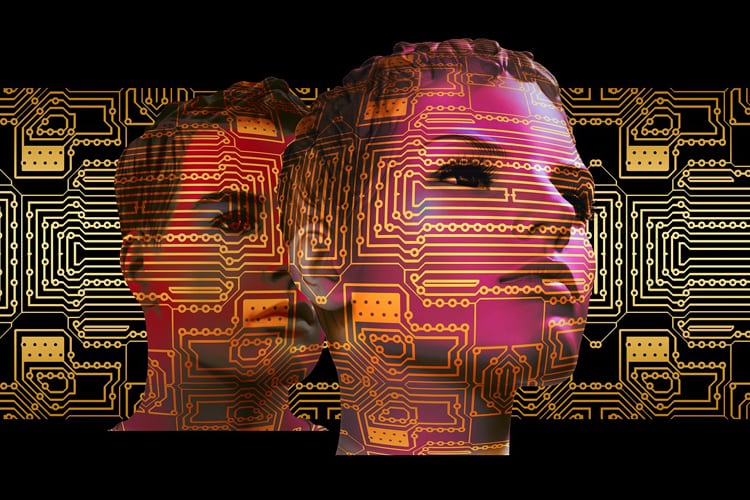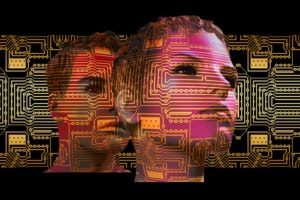As advancements in artificial intelligence technology rise across the world, business leaders are embracing the open-source culture. There are many reasons for this, such as multi-organizational collaboration and social responsibility.
But financial die-hards push back on the open-source approach to business growth. However, most experts believe that closed source AI hinders growth for all tech players, as well as a mediocre user experience.
Rodney Don Holder, a security software expert in the Southeastern United States, regularly interacts with AI tools. As such, he supports the growth of AI development resulting from open source efforts.
Artificial intelligence fuels the ability of machines to address menial every-day tasks that slow humanity down. It also builds the foundation for machine learning, wherein software-coded commodities can assimilate the environment and make decisions on their own while considering the context of the situation.
Open Source Versus Closed Source: What is the Difference?
As these names suggest, open source references a mindset popular in the Silicon Valley tech industry. Artificial intelligence and machine learning operate on computer coding and incredibly refined hardware components.
The open-source mindset believes that making these batches of code and hardware blueprints available to the public does more for humanity than does keeping it all close to the chest.
In contrast, Rodney Don Holder explains that a closed source approach seeks to protect code and hardware from the public eye. Their concern is more proprietary than it is collaborative. One example of closed source software is Apple as they work hard to maintain control of their software.
Benefits of Open Source Artificial Intelligence
More Empathy and Understanding Among Developers, Programmers, and Engineers
Tech solutions arrive on rigorous problem-solving. AI experts will often spend years of their lives looking for that one solution that will revolutionize their industry.
What open source has begun to demonstrate to the world is the power of alternative perspectives. Developers, programmers, and engineers from all walks of life “get a crack at” the problem. Open source platforms offer multiple perspectives and thus more easily work through conceptual roadblocks.
Faster Growth in Technological Breakthroughs
Rodney Don Holder explains that industry giants such as Goldman Sachs and Google are liberal with open-source AI technology. They hope to nurture of community of advanced troubleshooting to be more competitive. H2O.ai CEO Sri Ambati on Forbes noted,
When Google introduced TensorFlow, its open source machine learning framework, several years ago, developers said they hoped the move would contribute to improving the tool, while also accelerating product development.
A software-maker culture inspires established companies to experiment with AI and create platforms that align with their own business needs… These companies already have the data that fuels AI; they need the freedom to build models as rapidly as data changes. Open source helps them become co-inventors of software, not just buyers of it.
Additionally, this improves the greater talent pool of developers and programmers around the world.
Feedback Loops Between Developers and Users
In addition to enhanced collaboration among software engineers, open source expands the feedback loop between developers and users.
The user doesn’t need to be fluent in AI coding and hardware for them to contribute its development. Open source does, however, make the technical information more readily available.
For example, customers for an artificially intelligent product may reach out to customer service with a problem. The customer service agent creates a ticket, which then passes to a technician. When the technician gets on the phone with a customer, the expert and customer begin troubleshooting the problem together.
In this example, we find that the customer – though very intelligent – failed to understand how to operate their product. As such, the technician can kindly point out and correct the user error for better performance. If the AI technology was stored on an open-source platform, then two things happen in this scenario.
First, the technician has far more technical knowledge at their fingertips. When they engage the customer, they can impart some of that technical knowledge while troubleshooting the problem.
Second, the interaction between technicians and customers is documented for developers to examine whether or not the user experience can be made more convenient and to hopefully prevent the same issue from reoccurring.
In other words, open-source AI indirectly supports the coming together of technical experts and tech-illiterate customers. Both walk away with greater understanding and faster solutions.
Greater Accountability
Artificial intelligence and machine learning are not without risk. Careless developers can build code that tragically fails to operate within its intended parameters. Additionally, leaders acting in bad faith may try to take advantage of a public that lacks specific technology.
Open source both catches development errors faster and keeps deviant leaders from using AI for the wrong reasons.
Rodney Don Holder concludes that open source AI has been one of the most important developments within the technology industry and it still is continuing to grow.




